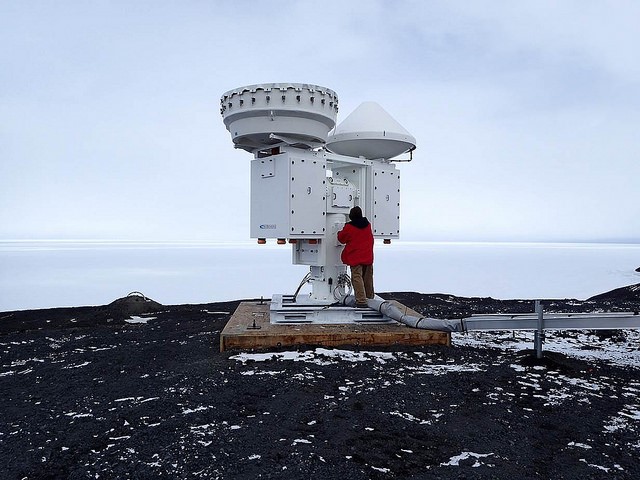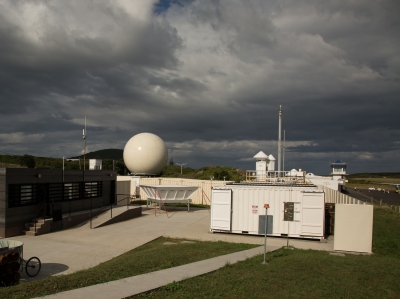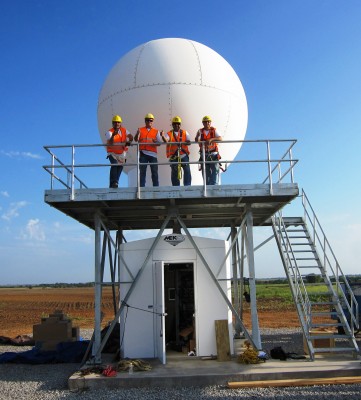ARM’s New Radar Operating Paradigm Aims to Maximize Performance
Published: 15 August 2016
Maintaining the pulse of the radar network is vital to research

Radars have been getting a lot of attention at ARM in the last few months.
These instruments represent a critical part of ARM’s observation strategy. The ARM Facility operates the largest research radar network in the world, including a wide range of instruments from single-frequency profiling radars to dual-frequency scanning instruments that are some of the most advanced meteorological radars in use today.
The goal for these radars has been 24-7-365 use, but deploying such advanced instrumentation has challenged the achievement of continuous operation. To date, the radar engineering team and technical staff in the field have worked hard to deal with instrument problems as they arise, but more coordinated solutions are now required.
A User-Driven Strategy
An annual meeting in February between ARM radar staff and representatives from the radar science community highlighted the need for a new strategy. Acting on those recommendations, Nitin Bharadwaj, lead for the radar engineering group who is at the Pacific Northwest National Laboratory, has developed a plan to focus the attention of ARM staff on bringing technical issues to closure—one set of radars at a time.
The essence of the plan is to concentrate on sets of radars, using a phased approach to address core issues for each radar over approximately two years. This will allow the radar team to systematically optimize the performance of each radar.
In consequence, some radars will be in an active phase, in which they receive concentrated attention from ARM staff, while others will be in a sub-active phase. Around five radars will be in the active phase at a time. The strategy’s key is coordination in characterizing and calibrating the radars while streamlining development of radar products and associated feedback for data quality. The same set of maintenance tasks for each subsystem will apply to every active radar deployed, as will operational support, efforts to improve each radar’s utility to the user community, and data flow activities.
Operational Optimization

Radars that are temporarily performing sub-optimally will generally continue to be operated because it is usually better for radar components to run the instrument than to let it sit idle. In such cases, ARM will communicate to the user community that the radar is operating in a reduced capacity and that the data may not be suitable for all applications.
With the focused attention that this plan brings on small sets of radars, the ARM Facility expects to sequentially bring the radars to optimum operating condition. After working through all the active phases, ARM should achieve a higher level of performance from this network than has yet been seen.
This is a critical outcome for ARM science users. As the current plan for the sequential phases unfolds over the next two years, ARM will be monitoring progress and adjusting elements as necessary.
Performance-Tuning the Network

ARM management and radar experts are convinced that the current plan to focus efforts is the best strategy to optimize the performance of the radar network.
# # #
The ARM Climate Research Facility is a national scientific user facility funded through the U.S. Department of Energy’s Office of Science. The ARM Facility is operated by nine Department of Energy national laboratories.
The ARM Climate Research Facility is a DOE Office of Science user facility. The ARM Facility is operated by nine DOE national laboratories, including .
Keep up with the Atmospheric Observer
Updates on ARM news, events, and opportunities delivered to your inbox
ARM User Profile
ARM welcomes users from all institutions and nations. A free ARM user account is needed to access ARM data.


















